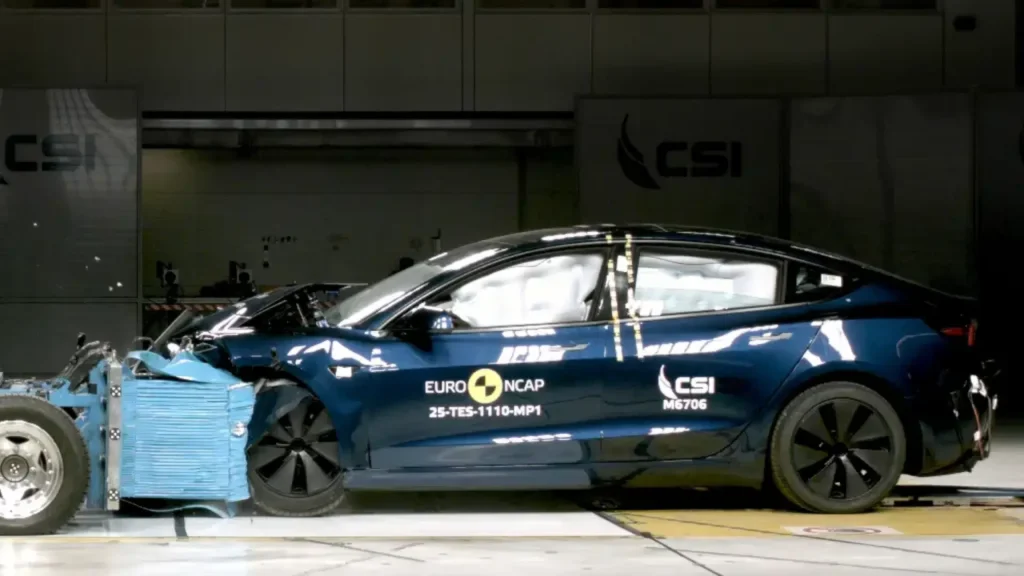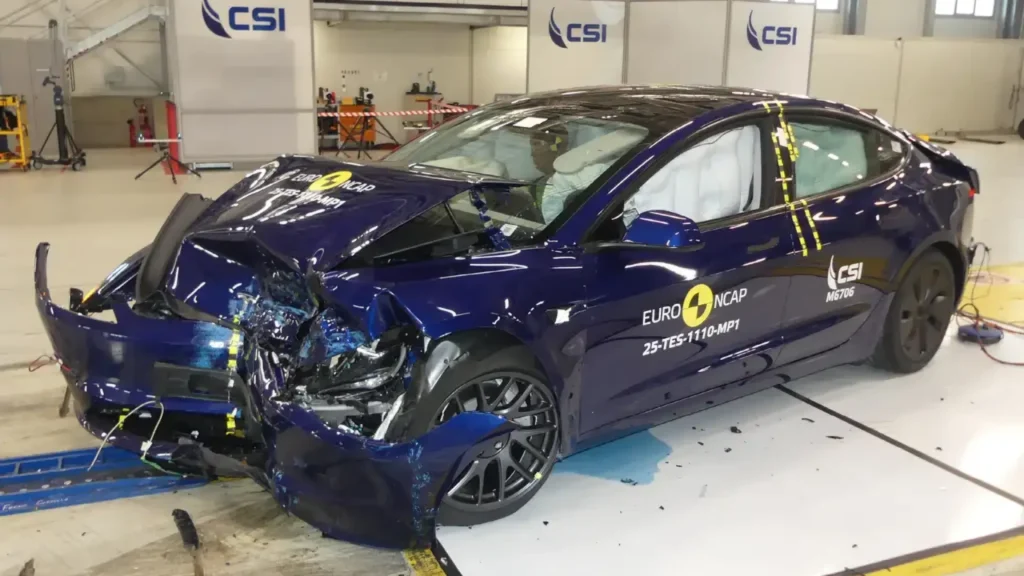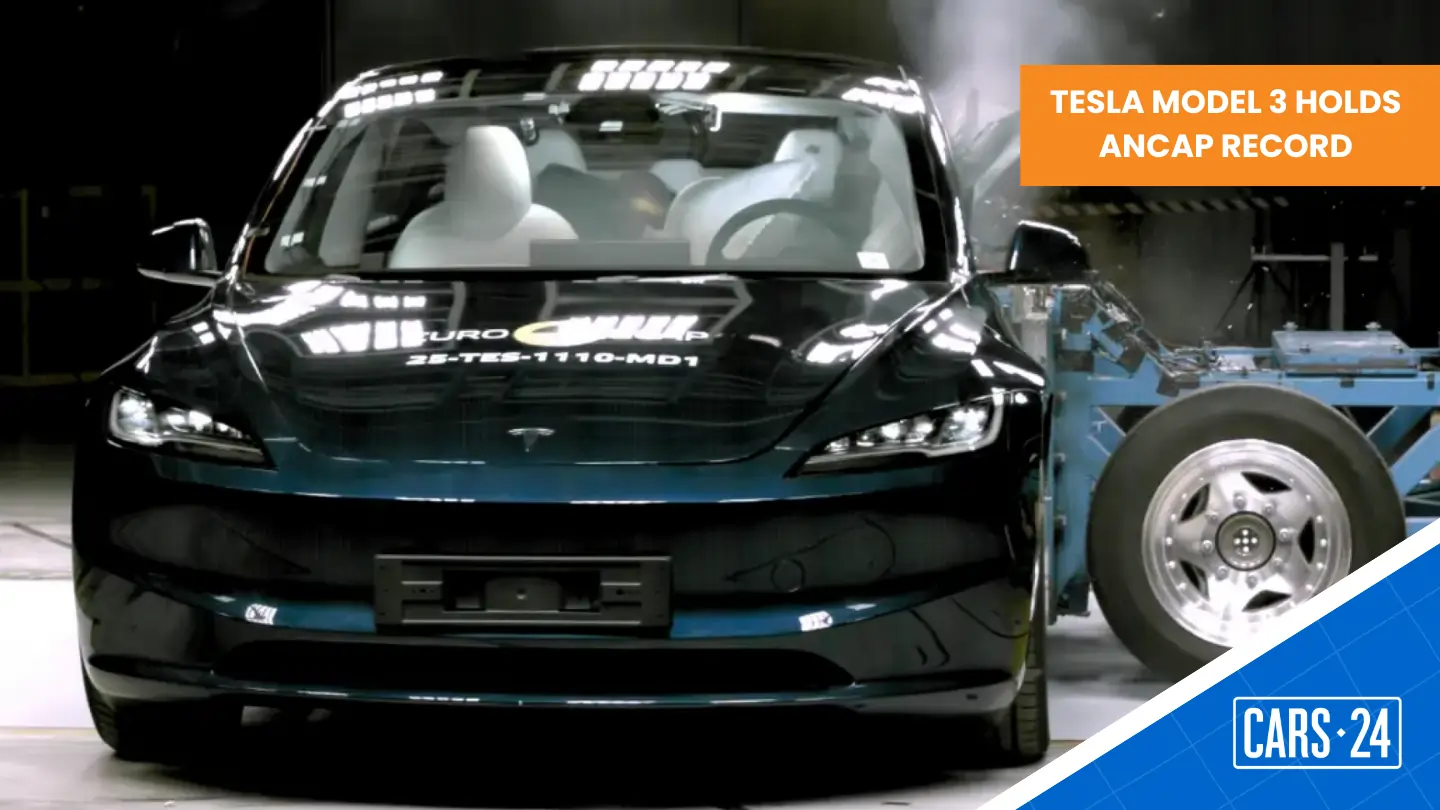The updated Tesla Model 3 has been officially awarded a five-star safety rating by ANCAP, covering vehicles built from September 2023 onwards. The Model 3 underwent structural and safety feature changes back then meant the existing rating from 2019 would not have carried through. Now, the updated EV sedan has undergone the latest round of independent testing under the 2023–2025 assessment protocols, and came out with flying colours.
The new rating builds on the Tesla Model 3’s established reputation, with significant upgrades helping it meet and exceed stringent new criteria. It is a welcome return to ANCAP’s top-tier status for the electric sedan, following its initial five-star result when first introduced to Australia and New Zealand in 2019.

Model 3 safety feature updates in 2023
Key to the current Tesla Model 3’s upgraded rating are several new safety enhancements. Notably, a centre airbag has been added between the front seats, earning full marks in far-side impact testing for its occupant-to-occupant protection. An active bonnet system has also been introduced, designed to reduce pedestrian injury by raising the bonnet on impact to create more clearance above hard engine components. This system was shown to deploy consistently across different speeds and pedestrian sizes during testing.
Read More: Tesla Model 3 ratings

Strong crash test performance
Adult occupant protection – 90%
In Adult Occupant Protection, the Model 3 achieved full marks in both the side impact and oblique pole tests. In the frontal offset (MPDB) test, it provided ‘Good’ protection to all vital body areas of the driver and passenger, except the driver’s chest and lower legs, which were rated as Adequate.
Child occupant protection – 95% (Record Score)
A standout result came in Child Occupant Protection, where the Model 3 earned the highest ever recorded under ANCAP’s current test regime. ‘Good’ protection was noted across all critical body regions for both six- and ten-year-old dummies in frontal and side impact assessments. The vehicle also includes a standard child presence detection system, capable of alerting drivers and activating climate control and window functions if a child is left inside. This system is now integrated into the front seats of all updated models.
Vulnerable road user protection – 89%
The Tesla Model 3 delivered a strong result in this area as well, also setting a new benchmark for ANCAP testing. The vehicle’s pedestrian-focused upgrades, including the active bonnet and robust autonomous emergency braking (AEB) systems, played a key role in this result. The performance of the AEB systems in all tests was rated as ‘Good’, while the only low score was in the specific impact test of protection for a pedestrian’s head against the stiff windscreen pillars.
Safety assist – 88%
In crash avoidance and driver assistance technology testing, the Model 3 with all its tech scored fairly well with the exception of the driver monitoring tests. Its performance here supports Tesla’s ongoing focus on integrating advanced safety systems across its model range.
Read More: Tesla Model 3 ANCAP safety report.
Safety still a plus with Tesla
Commenting on the results, ANCAP Chief Executive Officer Carla Hoorweg said:
“The upgraded Tesla Model 3 has again delivered all-round safety performance, with standout results for child occupant and vulnerable road user protection, making it a reassuring choice for families.”

Summary
The updated Tesla Model 3 not only retains its five-star ANCAP rating but pushes boundaries under stricter 2023–2025 testing protocols. With comprehensive upgrades including advanced airbag systems, pedestrian protection technologies, and an industry-leading child safety score, the Model 3 strengthens its position as one of the safest electric vehicles currently on sale in Australia and New Zealand.

Comments
New Comment